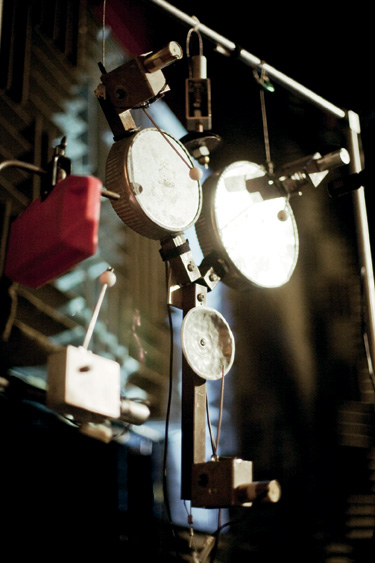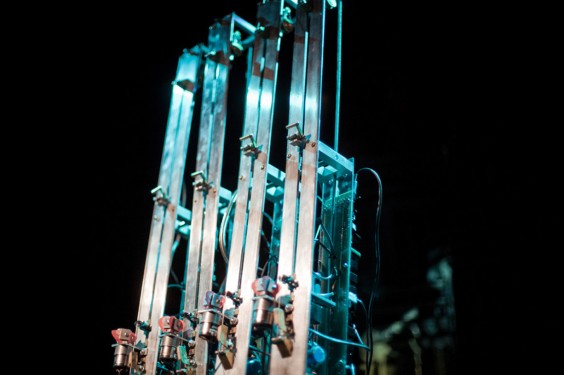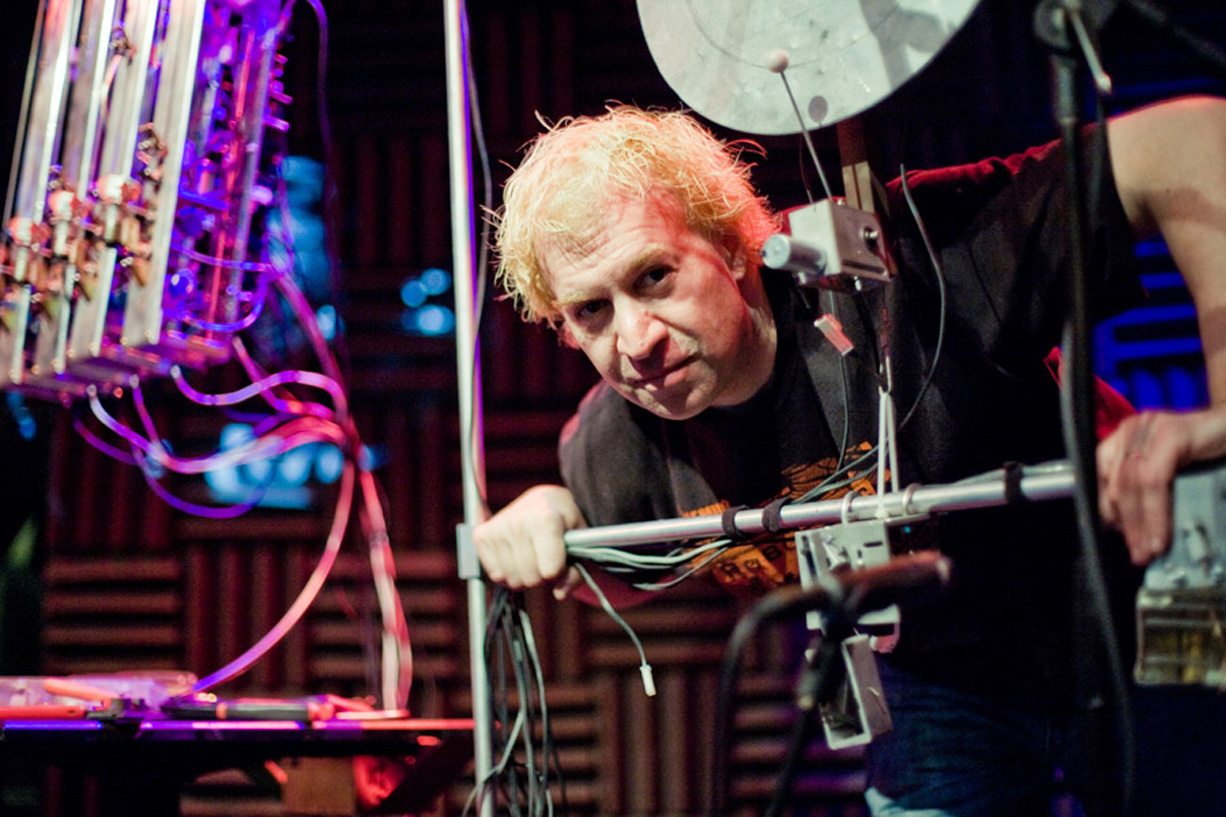The concept of robots that play music — let alone ones that do so on stage and in perfect time — is alien to the population at large. So it’s not uncommon for Eric Singer, the founder of the League of Electronic Musical Urban Robots (LEMUR), to raise eyebrows when describing his creations.
“I was once asked, ‘What does a musical robot sound like?’ and I said, ‘That’s kind of like asking, ‘What does a piano sound like?’” he says from his headquarters in Pittsburgh. “It entirely depends on who’s playing it and who’s performing.”
Even though the notion of instrumental robots can feel ahead of its time, a quick trip to YouTube easily dispels any disbelief. A search of “Pat Metheny” and “LEMUR” pulls up a seven-minute video in which Metheny, a jazz-fusion composer, plays guitar and is accompanied by an orchestra of LEMUR bots — automated arms, levers, and gears that can command a small army of accompanying instruments.
The performance is intuitive and seamless, and it’s hard to believe that living, breathing musicians are not playing it. “I didn’t know quite what to expect when I started this whole thing, especially making a record with it,” Metheny says during the video, referencing his newest album, Orchestrion. “The result is absolutely nothing like what I would have imagined.”

Singer formed LEMUR in 2000, but he has tinkered with computers and robotics since attending Carnegie Mellon University, where he graduated in 1988 as a computer-engineering major. While at Boston’s Berklee College of Music over the next few years, he discovered the school’s music-synthesis department and started taking serious strides in fusing his interest in technology and music.
“I had been a musician for most of my life, so I always had this left-brain, right-brain fight, knowing that I would never sort of be happy just doing one or the other,” Singer says. New-wave artists like They Might Be Giants and XTC heavily influenced his work, and the growing role that electronics played in music creation spurred him to keep pushing the envelope. “Back in the late ’80s and early ’90s, it was sort of a difficult thing to do compared to today,” Singer says. “We didn’t have microprocessors or development kits or things like that, so my first instruments were hooked up to Apple II computers.”
During his years in grad school at New York University in the mid-’90s, he started incorporating what he was learning in the classroom into the music that he was creating. His growing interest in artificial intelligence also had a major impact on the direction of his future career.
“We had this [CGI] saxophone player created in the lab that I was working at, and we wanted to make him improvise along to the music,” Singer says. “We would send him information about what the piano player was playing, and he would create a saxophone improvisation based on that. Bear in mind that NYU’s computer-science program really has nothing to do with music, but I was able to see the connections between techniques in computer science that could be purposed in music.”
Singer had made instruments that produced computerized sound for nearly a decade before he decided to find ways to incorporate acoustic instruments into the mix.

“I thought one day, ‘If I reverse the equation and have a computer do the talking, that could go out to real instruments,” he says. Soon enough, he started brainstorming with colleagues, and the League of Electronic Musical Urban Robots was born. Contrary to the images that thoughts of a musical robot can conjure, LEMUR bots often look and sound just like regular instruments that are simply guided by MIDI software and computer programming.
“One of the philosophies of the group is to create instruments that are robotic as opposed to adding robots to existing instruments,” Singer says. “It’s given the same kind of control over acoustic instruments that musicians have enjoyed for a long time over electronic sounds, and acoustic instruments have particular advantages over synthesizer sounds. They sound, in general, just more rich and live.”
Over the years, musicians such as contemporary composer Todd Reynolds, experimental violinist Mari Kimura, and electronic pioneer Morton Subotnick have created music utilizing LEMUR, and Singer’s observations of their compositional styles has informed the evolution of his project. “It’s my job as a creator to make my instruments as easy to use and as intuitive to use as possible,” he says, “and that has frankly taken a long time — several iterations and interfaces on the robots themselves. I’ve learned a lot from watching the composers work and what it takes to work seamlessly with the instruments.”
In terms of selecting musicians for collaboration, Singer tends to be open to different genres, and it’s not uncommon for musicians to approach him with ideas. In Metheny’s case, he commissioned Singer to create custom LEMUR instruments that would accompany him on a Spring 2010 tour and essentially act as his backup band. “In his show, he comes out playing a live acoustic guitar for a few songs, and then he plays a song with one robot,” Singer says. “Then he lifts the curtain up and unveils the orchestra that is about 60 instruments, and about 45 were created by us.”

